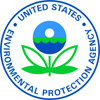EPA Fines Norfolk, Nebraska, Company for Alleged Chemical Risk Prevention Violations

LENEXA, KAN. (SEPT. 3, 2024) – Food producer Hiland Dairy Foods Company LLC of Norfolk, Nebraska, has agreed to pay a $93,107 civil penalty to resolve alleged violations of the federal Clean Air Act’s chemical risk prevention provisions.
According to the U.S. Environmental Protection Agency (EPA), the company stores over 10,000 pounds of anhydrous ammonia, a regulated toxic substance, and failed to comply with regulations intended to protect the surrounding community from accidental releases. The alleged violations included:
- Failure to conduct compliance audits at least every three years.
- Failure to update emergency contacts.
- Failure to conduct and document emergency response coordination activities.
Anhydrous ammonia presents a significant health hazard because it is corrosive to the skin, eyes and lungs. High levels of exposure may lead to choking and death.
“It is critical that companies that handle dangerous chemicals comply with the safety requirements of the Clean Air Act,” said EPA Region 7 Enforcement and Compliance Assurance Division Director David Cozad. “EPA is committed to protecting communities from potentially catastrophic releases, particularly those communities disproportionately affected by environmental harm.”
EPA also identified the community surrounding the Hiland Dairy facility as a potentially sensitive area, because of exposures to toxic air releases, ozone, and proximity to a Superfund site. EPA is strengthening enforcement in overburdened communities to address disproportionately high and adverse human health or environmental effects of industrial operations on vulnerable populations.
The Clean Air Act’s Risk Management Plan Rule regulations require facilities that use regulated toxic and/or flammable substances to develop a Risk Management Plan, which identifies the potential effects of a chemical accident; identifies steps a facility is taking to prevent an accident; and spells out emergency response procedures should an accident occur. These plans provide valuable information to local fire, police, and emergency response personnel to prepare for and respond to chemical emergencies in their community.
EPA has found that many regulated facilities are not adequately managing the risks that they pose or ensuring the safety of their facilities in a way that is sufficient to protect surrounding communities. Approximately 150 catastrophic accidents occur per year among regulated facilities. These accidents result in fatalities, injuries, significant property damage, evacuations, sheltering in place, or environmental damage. Many more accidents with lesser effects also occur, demonstrating a clear risk posed by these facilities.
Reducing risks from accidental releases of hazardous substances at industrial and chemical facilities is a top priority for EPA, which identified this goal as one of its National Enforcement and Compliance Initiatives in 2024.
Learn more about EPA’s Risk Management Plan Rule.
# # #
Learn more about EPA Region 7
View all Region 7 news releases
Connect with EPA Region 7 on Facebook and Instagram
Follow us on X: @EPARegion7
